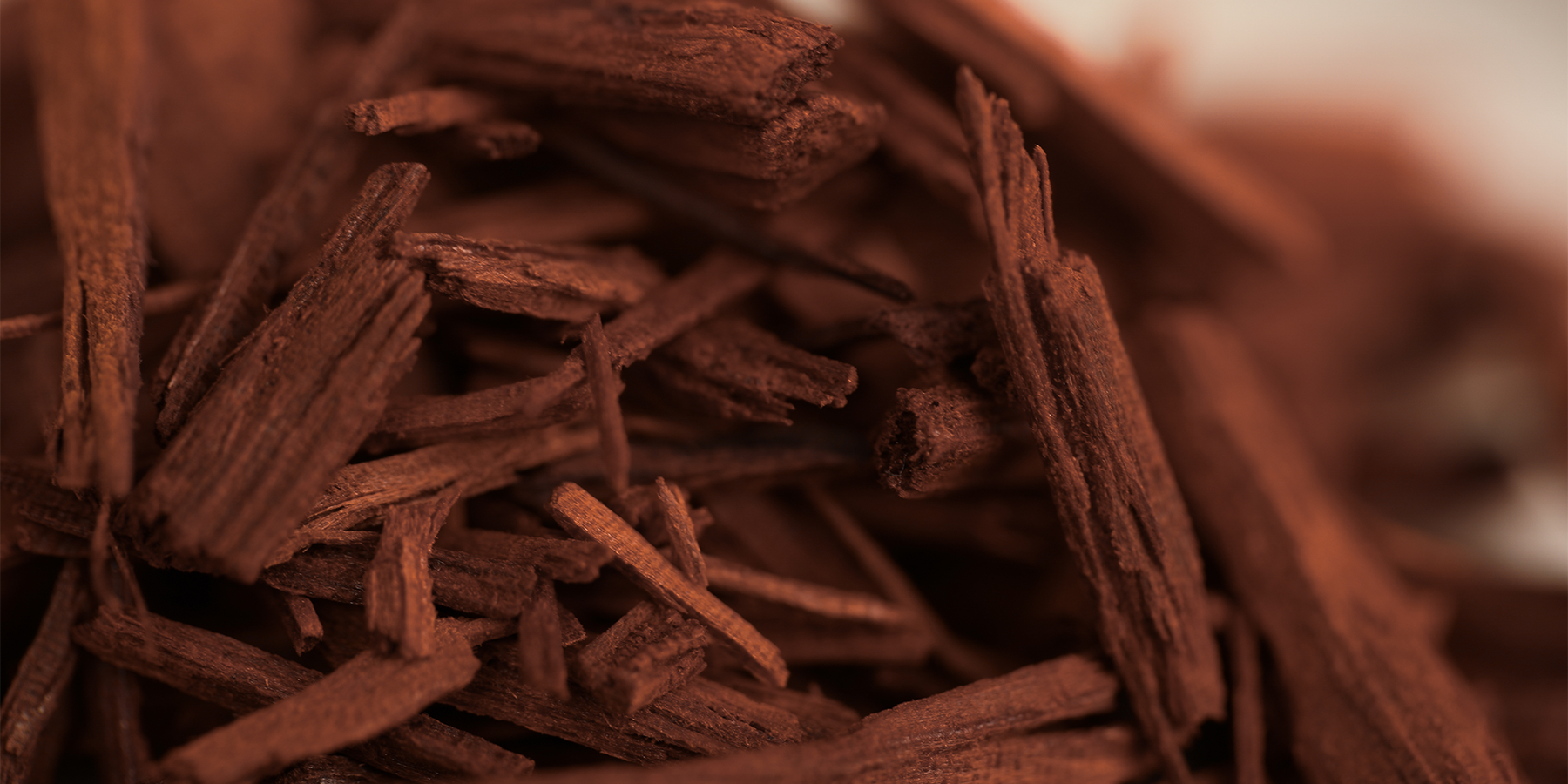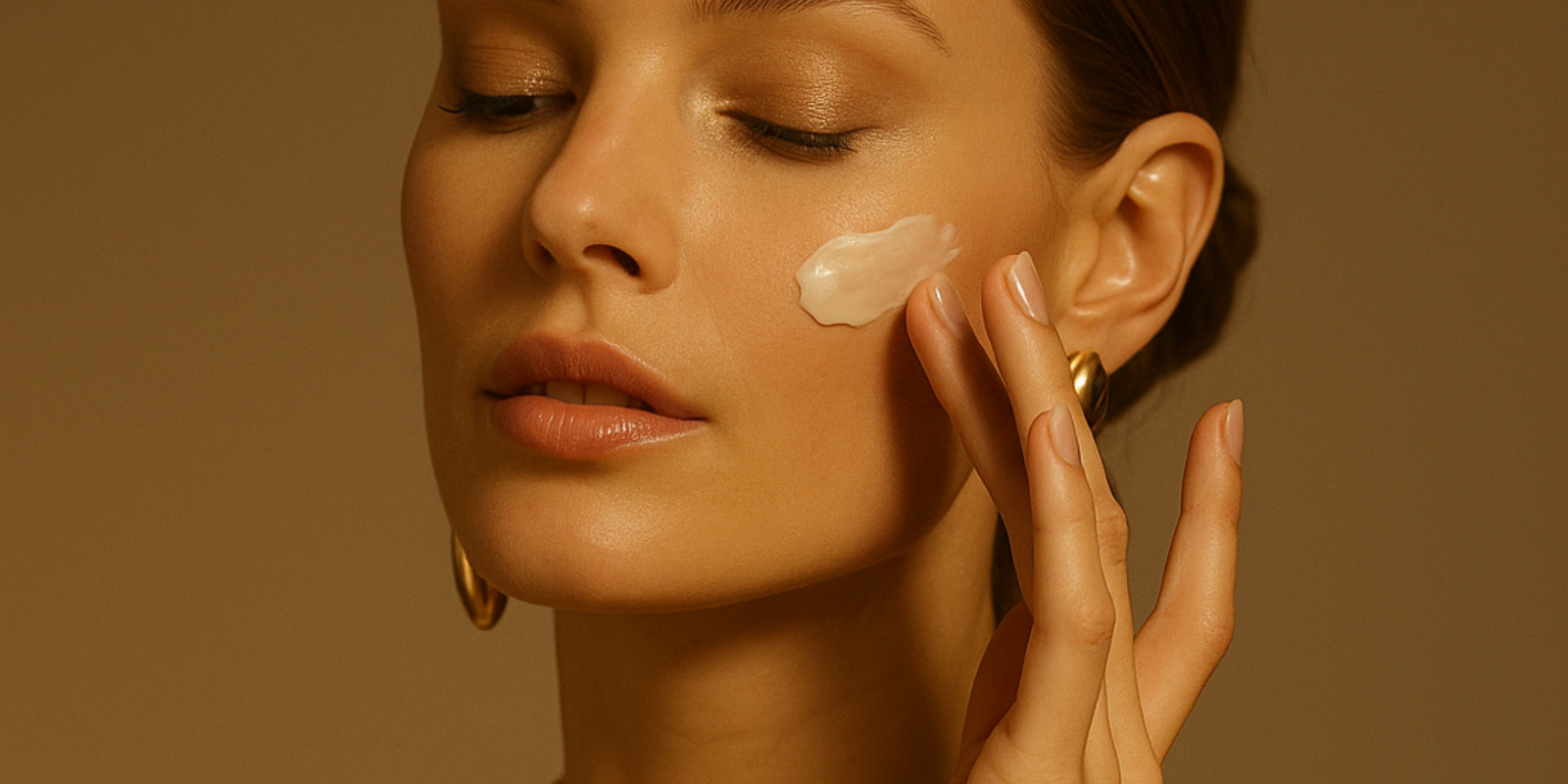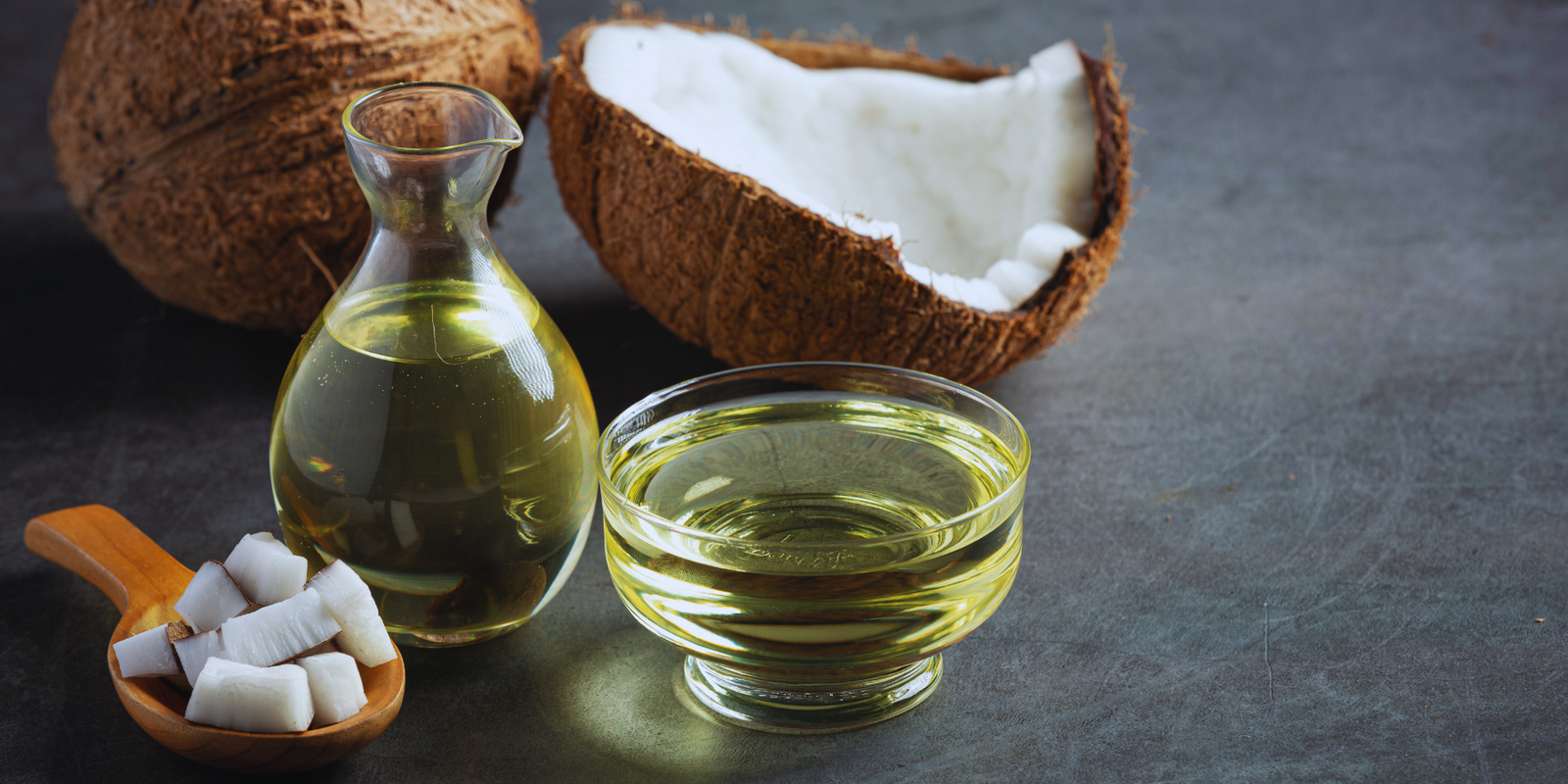EWG Verified & Leaping Bunny Certified | Free Gift $200+
EWG Verified & Leaping Bunny Certified | Free Gift $200+
What Does Sandalwood Oil Do for Skin? The Anti-Aging Benefits Explained

What Does Sandalwood Oil Do for Skin? The Anti-Aging Benefits Explained
Rooted In Ancient Medicine
Sandalwood oil has been revered for centuries for its soothing scent and potent healing properties, making it a staple in natural skincare, traditional medicine, and holistic practices for most of recorded human history. Today, I keep up the tradition by using it in our signature Holy Grail Face Oil formula. With powerful anti-inflammatory, antioxidant, and anti-microbial benefits, it not only calms and nourishes the skin but also brightens skin, balances oil production, and promotes a clear and healthy complexion. In this post, I’ll explain exactly what Sandalwood oil is, what it does, and what makes it an incredible addition to your skincare routine.
What is Sandalwood?
Sandalwood is a type of fragrant wood that comes from trees in the genus Santalum. The trees are medium-sized evergreens that typically grow to about 30 feet. The first species are believed to have originated in India, particularly in the southern region. Now, they are found throughout various areas with tropical or subtropical climates—primarily India, Australia, Southeast Asia, the Pacific Islands, Sri Lanka, Africa, and China.

Where does Sandalwood Oil come from?
Sandalwood Oil is derived from the heartwood of Sandalwood trees. The heartwood is the dense inner part of the tree trunk, which forms as the tree ages; it is darker in color than the rest of the tree and becomes resistant to decay. It develops when the inner cells of the tree naturally die off and become infused with various natural compounds, such as tannins and resins, that give it its characteristic color, fragrance, and durability.
What does Sandalwood Oil smell like?
Sandalwood Oil has a very rich, distinctive, and complex aroma. When you smell it, the primary note you would detect is a deep, smooth wooden scent that is both warm and grounding. It has a very subtle sweetness that is soft and velvety, with slightly earthy, musky undertones. It also has a resinous quality to it, which gives it a bit of spice. I adore the scent of Sandalwood Oil, which blends well with so many other essential oils.

How is Sandalwood Oil made?
The first step to making Sandalwood Oil involves harvesting the heartwood of mature trees. The older the tree, the more developed and aromatic the heartwood will be, which enhances the quality of the oil. After harvesting, the outer layers called the sapwood, are removed, and the heartwood is chipped or powdered to increase the surface area.
The heartwood chips or powder are placed into a steam distillation unit, which passes steam through the wood. The steam passing through causes the essential oil in the heartwood to vaporize. The steam, which now carries the oil vapors, funnels through a condenser, which turns the steam back into liquid form. This liquid consists of two layers: water and the essential oil.
The essential oil is then separated from the oil through a process called decantation. The remaining water, known as hydrosol, will contain traces of the essential oil and can be used as a lightly scented facial or room mist. The collected essential oil is then filtered to remove and particles or impurities and is tested for quality to ensure it meets the desired standards for aroma, purity, and santalol content (the key component in Sandalwood Oil).
How do you use Sandalwood Oil?
Sandalwood essential oil is an incredibly potent substance that contains a number of active compounds that can improve the health and appearance of your skin. However, an additional step needs to take place between obtaining any essential oil and using it on your skin: dilution. Because essential oils are so potent, they must always be diluted with a carrier oil before being used in skincare. If not, you risk potentially severe skin irritation and sensitization.
When using any essential oil, you want to make sure you are using it at no more than 2 percent dilution. This means that if you wanted to use just one drop of essential oil, you would first need to add 98 drops of carrier oil before you can safely apply it to your skin. At Flora Mirabilis, we measure our essential oils to the hundredth of a gram when mixing them with carrier oils to ensure they are at precisely 2% of our formulas. For mixing smaller qualities at home, I often suggest the following ratio to achieve a 2% dilution: use 12 drops of essential oil for every 1oz of carrier oil.
What’s inside Sandalwood Oil?
Sandalwood oil is composed of a variety of chemical compounds that contribute to its aroma and therapeutic properties. The majority are sesquiterpenes, which are naturally occurring organic compounds that are part of a larger family called terpenes. Sesquiterpenes are produced by many plants and are known for their anti-inflammatory, antimicrobial, and antioxidant properties.
α-Santalol
The primary component of Sandalwood Oil is responsible for its woody, sweet aroma. It is a sesquiterpene with significant therapeutic properties; it is extremely anti-inflammatory, antioxidant, and antimicrobial. Total concentration: 40-55%
β-Santalol
The other key component that complements the effects of α-Santalol. Total concentration: 15-25%
Lanceol
Another sesquiterpene that is particularly calming and skin soothing. Total concentration: 5-10%
Santalene
Santalene is a sesquiterpene hydrocarbon with anti-inflammatory and antimicrobial properties. Total concentration: 1-5%
Bergamotol
Anti-inflammatory and skin-soothing sesquiterpene. Total concentration: 1-5%
Farnesol
A naturally occurring alcohol with anti-microbial properties. Total concentration: <1%
Curcumenol
A sesquiterpene alcohol that is anti-inflammatory and antioxidant. Total concentration: <1%
What does Sandalwood Oil do for your skin?
Sandalwood Oil is an incredibly potent oil with a myriad of benefits for your skin.
Reduces Inflammation
The α-santalol and β-santalol compounds in Sandalwood Oil can significantly reduce inflammation by inhibiting the production of pro-inflammatory cytokines. Cytokines are molecules that signal inflammation in the body, so by reducing their activity, Sandalwood Oil can help to calm inflamed skin.
This makes Sandalwood Oil particularly beneficial for conditions like eczema, psoriasis, and rosacea, where inflammation is a key symptom. It also helps with inflammatory acne. Regular application can help reduce redness, swelling, and irritation, providing relief for sensitive or reactive skin.
Fights Acne
Sandalwood Oil has natural antimicrobial properties due to its active compounds, which can inhibit the growth of bacteria, fungi, and even some viruses. Its low molecular weight allows the oil to penetrate deeply into the skin and effectively reduce the presence of acne-causing bacteria.
This antimicrobial action helps to prevent and treat acne and reduces the risk of infections in minor cuts or abrasions. Sandalwood Oil is a gentle yet effective alternative to harsher treatments for people with acne-prone skin, reducing breakouts without causing dryness or irritation.
Anti-Aging Benefits
Sandalwood Oil is packed with antioxidants, which are crucial in combating free radicals—unstable molecules that damage skin cells and accelerate the aging process. The potent antioxidant properties of the oil help neutralize these free radicals, which protects your skin from oxidative stress.
This helps to minimize the appearance of fine lines, sagging skin, and hyperpigmentation. By protecting your skin’s collagen and elastin from breaking down, Sandalwood Oil will help maintain your skin’s firmness, contributing to a more youthful and radiant complexion over time.
Soothes and Calms
The santalol compounds (α-santalol, β-santalol) in Sandalwood Oil have been shown to activate certain receptors in your skin, which are involved in the sensation of heat and the regulation of pain and inflammation. The activation of these receptors can help soothe and calm inflammation in the skin, which reduces itching, discomfort, and irritation.
This soothing quality makes Sandalwood Oil particularly beneficial for post-sun exposure and for calming inflamed, irritated skin.
Regenerates and Evens Skin Tone
Inflammation is a major offender when it comes to uneven skin tone and texture; it interrupts the natural regeneration of your skin cells, which is crucial in the healing process of wounds, scars, and other skin imperfections. By reducing inflammation, Sandalwood Oil supports cellular turnover and the proliferation of fibroblasts (cells in your connective tissue that produce collagen), which are key components in skin repair.
This regenerative ability makes Sandalwood Oil effective in reducing the appearance of scars, hyperpigmentation, and fine lines. It can also accelerate the healing of minor wounds and acne, which leads to quicker recovery and less visible scarring. Regular use of Sandalwood Oil can lead to a smoother, more even complexion with enhanced clarity and brightness.
Sandalwood Oil in Flora Mirabilis Products.
Sandalwood Oil has always been a favorite of mine for all it’s incredible skin benefits, so I made sure to include it in our Holy Grail Face Oil. In fact, it is the primary essential oil in the formula. This means that our Holy Grail Face Oil has the deep, wooden aroma of Sandalwood as one of its main scent notes, but most importantly, is rich in all the compounds that help improve the health and appearance of your skin.
We only use the species Santalum album, which is Indian Sandalwood, because it has the highest levels of santalol of any species of Sandalwood, and is therefore the most beneficial. This oil will give you dramatic skin results over time; a brighter complexion, reduced areas of hyperpigmentation, less redness and irritation, an improvement in acne, and a softening of any fine lines. I absolutely swear by it, and could never go without it in my skincare routine.
A note on sustainability.
Historically, Sandalwood has been overharvested due to its high demand in perfumery, traditional medicine, and skincare, leading to the depletion of wild sandalwood populations in many regions. This unsustainable practice has put significant pressure on the species, particularly in India, where the most prized sandalwood is found.
Recognizing the importance of preserving this precious resource, at Flora Mirabilis we are committed to sourcing our organic Sandalwood Oil exclusively from farms that adhere to sustainable harvesting techniques. These farms not only cultivate Sandalwood trees in a way that allows for regeneration and long-term viability but also ensure that the trees are harvested at the right age to maximize their natural benefits.
By supporting sustainable practices, we help protect the future of Sandalwood while providing you with the highest quality oil that is both ethically sourced and environmentally responsible.
Conclusion: Sandalwood Oil is a Powerful Anti-Aging Ingredient.
Sandalwood Oil is a powerhouse natural ingredient for skincare, offering a multitude of benefits that make it essential for achieving healthy, radiant skin. From its ability to calm inflammation and reduce redness to its role in promoting collagen production and improving skin texture, Sandalwood Oil addresses a wide range of skin concerns. It helps even out skin tone, fades hyperpigmentation, and supports the skin’s natural healing processes, making it ideal for both daily care and targeted treatments.
However, it's crucial to choose Sandalwood Oil-containing products that are sourced sustainably. By incorporating sustainably sourced Sandalwood Oil into your skincare routine, you’re not only treating your skin to the best nature has to offer but also supporting the preservation of an ancient, valuable tree.
Key Takeaways
- Rich in antioxidants to fight free radicals and slow skin aging
- Calms redness, inflammation, and irritation
- Supports collagen for firmer, youthful skin
- Promotes a brighter, more even complexion
Resources.
https://pubmed.ncbi.nlm.nih.gov/28360856/
https://pubmed.ncbi.nlm.nih.gov/29130352/
Also in Apotheca Edit

The Dangers of Designer Skincare
The price tag of luxury skincare doesn’t mean rare ingredients and better results. Many designer formulas prioritize packaging gimmicks and prestige over true skin health—often using silicones, synthetics, and preservatives that quietly damage your skin barrier. Learn about label transparency and why “premium” isn’t always better to reveal what skin nourishment really looks like.

The Top 10 Best (And Worst) Oils to Use On Your Face
I get asked all the time about using oils like avocado, olive, and coconut on the face—and the truth may surprise you. Not every “natural” oil is good for your skin. In this post, I break down the best and worst oils to use, what their comedogenic ratings really mean, and how to choose the ones that will actually nourish your skin instead of clogging it.

The Truth About Coconut Oil in Skincare: Why I Never Use It on the Face
While coconut oil does have benefits for skin and hair, its fatty acid profile makes it a less-than-ideal choice for facial skincare. If your goal is clear, youthful, and radiant skin, there are far better options.
Subscribe
Sign up to get the latest on sales, new releases and more …
Reviews
See why 1000's have simplified their skincare with Flora Mirabilis.

